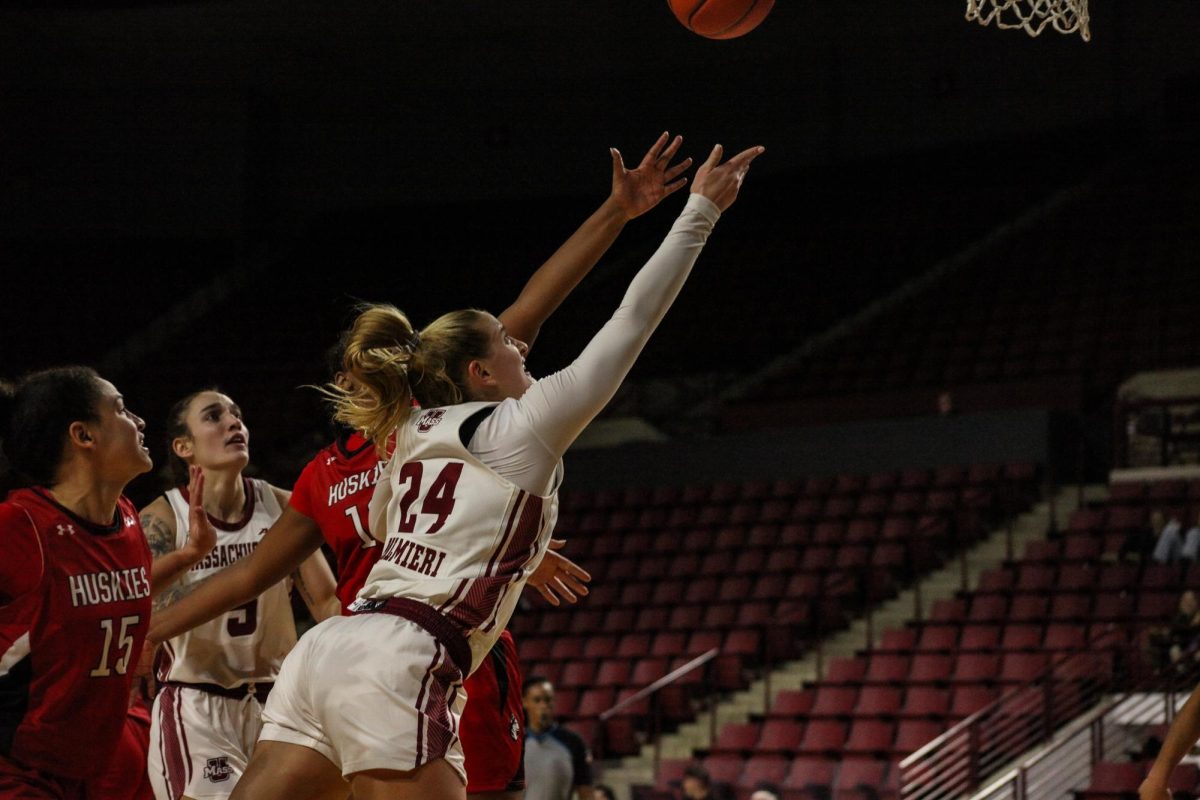Halloween is a time for fun and conviviality among students at the University of Massachusetts. It is a time for loud festivals with costumes of all kinds, unhealthy amounts of candy and spooky music. It is a time for some excitement in our everyday lives.
Unfortunately, it is also a time for increased levels of waste disposal due to the unsustainable way costumes, decorations and packaging are manufactured and used. Most modern Halloween costumes are not made to be durable and are often disposed of after a single use.
According to the New York Times, non-biodegradable materials, including polyester and nylon are used in single-use costumes. Additionally, Halloween candy tends to be packaged in elaborate plastic, a large portion of which is disposed of as a result. The New York Times traces the increase in levels of Halloween waste to around the end of World War II when the holiday started being celebrated by consumers on a larger scale.
Helena Wong and Devan Judson, co-presidents of Students for Sustainable Fashion and Art, have noticed how Halloween costumes tend to get discarded on campus during the season.
“…I think, living in the dorms, I’ve had a chance to see firsthand, the next couple days after the Halloween weekend, people just discard things like princess crowns and cat ears… the plastic items that they know they won’t reuse or re-wear, and just throw them in the trash instead of [the items] being recycled or donated,” Judson said.
Wong criticized not only the negative impacts of fast fashion on the environment, but also the involvement of exploitative labor in its production. “I think that Halloween costumes are obviously fast fashion. That term is just… mass-produced clothing at the cheapest cost possible, and with little morals involved. They’re made overseas, using either slave labor or children, so… taking advantage of people overseas who don’t have better opportunities, and using the worst fabric possible,” Wong said, adding that polyester costumes do not decompose easily and have especially negative impacts when they end up in landfill.
Wong also urged students to be conscious of how they buy and use their Halloween costumes. “I put down the statistic, but basically, I know that last year, Americans spent 6.9 billion dollars on their Halloween costumes, and I just think the biggest problem with Halloween costumes is… not necessarily that they’re fast fashion, but it’s the fact that they’re only worn… for one night, and then discarded… days after, because people… just go all out for one costume because they feel that they need to, and then they throw it away,” Wong said.
Now, with the spooky season upon us, UMass takes its own measures towards maintaining sustainability on campus. The Office of Waste Management has outlined procedures for how different kinds of waste, from cardboard and plastics to e-waste and Styrofoam, should be disposed of. In addition, the town of Amherst has clearly defined regulations regarding waste disposal in general. For example, it banned the commercial use of single-use plastic bags, which are defined as having a thickness of three thousand inches or less, in 2017.
In the run-up to Halloween, Students for Sustainable Fashion and Art held a costume swap and tabled at the Farmers’ Market.
“[Clothing swaps] are a great opportunity for us to sit down in front of students and just explain why Halloween is so wasteful, give them some statistics, and offer them an opportunity to choose a less wasteful way to buy a costume. And I think the Farmers’ Markets are, again, a great way for us to just be able to do that by looking at other options, especially for students who can’t get off campus to go thrifting, or to look for donated pieces… so it’s just a great way for students to be able to access that on campus,” Judson said.
Another on-campus organization that promotes sustainable practices at Halloween is the University Programming Council, which hosted its annual Haunted House from Friday, Oct. 18 through Saturday, Oct. 19.
“We have a good storage closet… so we’re able to store a lot of things, previous things that we’ve had for previous years, we keep in the closet and then we build off of it every year. So, this year, we had, I think, one of the best Haunted Houses we’ve had in many years, but the amount [of things] we purchased was much less than we did previous years. Some of the costumes… we don’t necessarily buy, we borrow from other organizations. One of the dresses for one of the costumes we got [was from the] Theatre Guild,” UPC Associate Director Jake Soriano said.
Michael Dufresne, Collection and Moving Manager at the Office of Waste Management, highlighted the importance of educating students on reducing waste at Halloween.
“If you took time ahead of [Halloween] and maybe did some sort of educational programming leading up to [Halloween], maybe [Sustainable UMass] could do some sort of education leading up to it, about what’s recyclable and what isn’t, and better practices [in recycling],” Dufresne said.
While Halloween has been wasteful in the past, students, faculty and staff alike can all pull together and limit the amount of waste that is generated. Reducing waste levels at Halloween, whether by saving old costumes and decorations or limiting the amount of packaging used in wrapping candy, will mitigate harm to the environment and therefore allow us to have a clean, fun spooky season.
Kalana Amarasekara can be reached at [email protected].




















